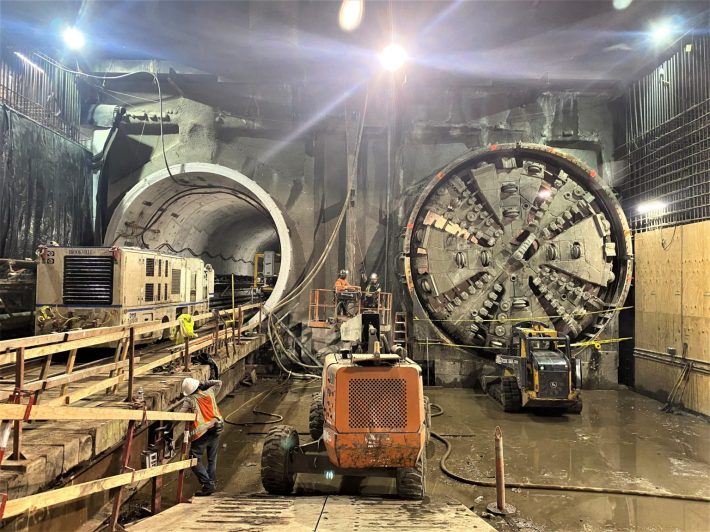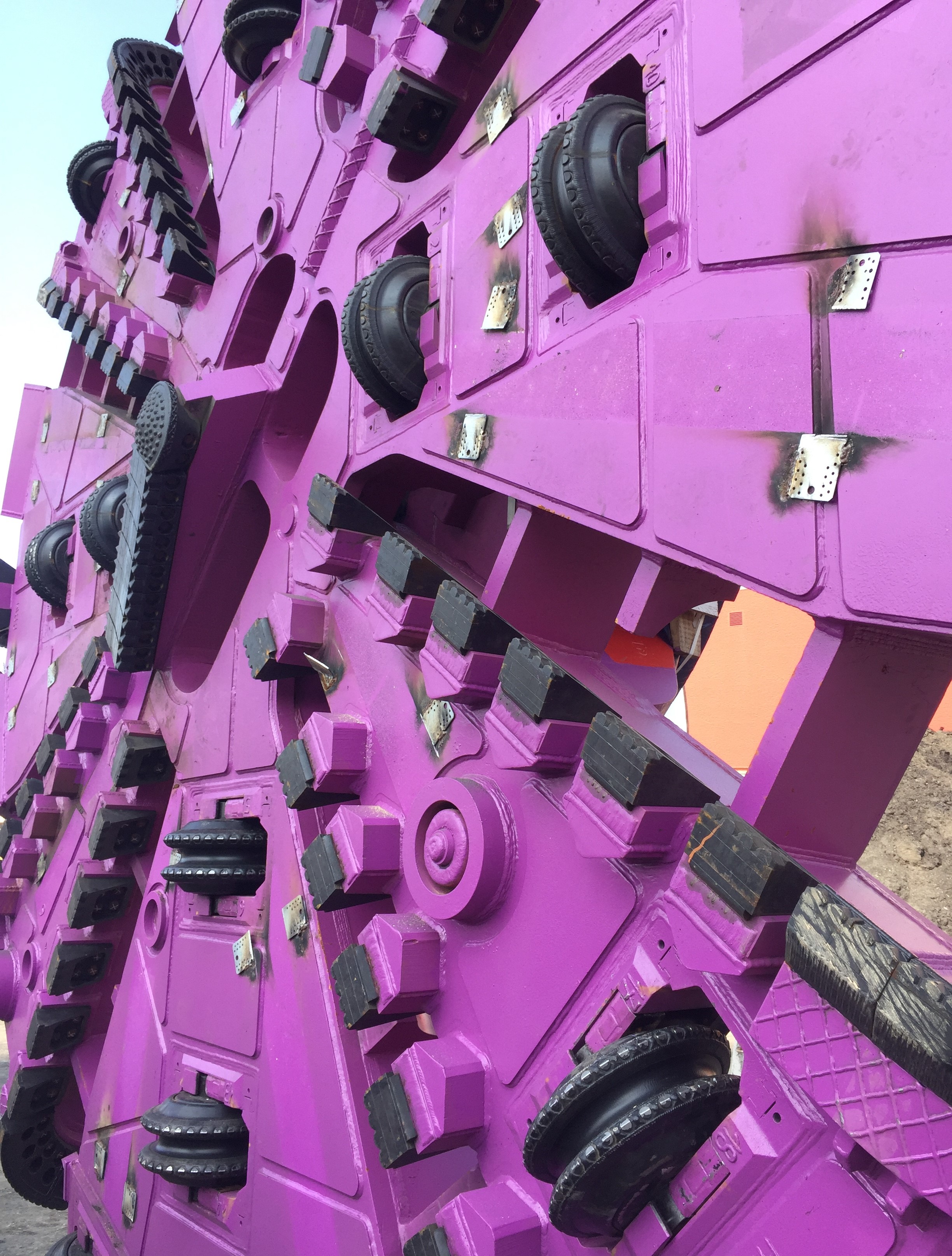Who expected it would be easy to tunnel through Los Angeles' iconic La Brea tar pits? Metro has put a good face on its progress on the Westside Purple Line Extension section one tunnel bore, but recently there have been signals that difficult tar sand conditions are driving costs up. Metro has completed three miles of parallel tunnels below Wilshire Boulevard from Western Avenue to Fairfax Avenue, but there is still another potentially challenging mile to go from Fairfax to La Cienega Boulevard.

Metro is currently extending the Westside Purple (now D) Line westward in three sections primarily under Wilshire Boulevard:
- Section One: Currently about 60 percent complete, WPLE1 will extend from the current Wilshire/Western Avenue terminus to La Cienega Boulevard.
- Section Two: Currently about 30 percent complete, WPLE2 will extend from La Cienega to Century City.
- Section Three: Currently about 10 percent complete, WPLE3 will extend from Century City to the Westwood VA Hospital.
The $2.8 billion 3.9-mile WPLE1 section began construction in 2014, and was then anticipated to be completed in 2023. In mid-2018, Metro celebrated the beginning of tunneling. Twin tunnel boring machines initially dug eastward from La Brea Avenue to the current D Line terminus at Western. The TBMs were then transported back to La Brea and launched westward in October 2019.
Through January of this year, Construction Committee reporting showed the project status as "on target" to meet cost and schedule projections. Starting with the February Construction Committee report, the project cost began to be flagged as a possible problem. In a May report, Metro's construction program announced that WPLE1 is facing a potential cost overrun, with an anticipated adjustment to the project budget expected in fiscal year 2020-21.
Metro cites three factors causing project cost overruns, but the language is pretty opaque:
Differing site conditions – dewatering, gas, etc.Third party requirements impacting the project budget.Contractor claims
According to a February 2020 project newsletter, tunneling site conditions encountered include "tar sands and methane pockets." The project and its construction processes were designed to account for well-known methane gas dangers in that area - including double gaskets to prevent gas intrusion during regular passenger operations. A March 5 board box memo describes the slow process of tunneling west of La Brea:
...tunnels have recently been experiencing automatic shutdowns of the Tunnel Boring Machines (TBMs) in response to gas detection in the tunnels. The gas is being detected by gas sensors located at various positions near the front of the TBM. The gas sensor alarm/shutdown is triggered when the methane gas levels reach an action level mandated by Cal/OSHA [California's Division of Occupational Safety and Health which regulates workplace safety].
Cal/OSHA allows only a small fraction of gas in the tunnel working environment at any time. If gas is detected at the action limit, an alarm is generated and equipment (except for essential safety systems such as lighting and ventilation) is shut down. All gas encountered in the WPLE Section 1 Project (even the amounts over the reaction limit) is immediately diluted by the robust tunnel/station ventilation system. ...staff must stop work, evacuate both tunnels and the Wilshire/La Brea Station, and then Cal/OSHA is notified of the details of the alarm event. After Cal/OSHA confirms everything is safe, they clear the tunneling contractor to resume work.
The clearance process with Cal/OSHA typically takes about 1 hour. To date, the Project has experienced over 60 automatic shutdowns due to gas alarms. After having experienced this frequency of alarms, Cal/OSHA has reclassified the... [La Brea to Fairfax] tunnels as "Extra Hazardous,” from the prior classification of "Gassy." This reclassification required the Project to add additional methane sensors in the existing ventilation ductwork.
In mid-May, both WPLE1 tunnel machines made it to Fairfax. There remains just one more mile to complete the section one tunneling. Having passed the La Brea Tar Pit area, one might think that the tunnelling difficulties are behind the project, but, no, Metro spokesperson Dave Sotero states that the remaining stretch "will have its own challenges" with more "tar and gassy conditions" expected.

Sotero also explained some of the other cost overrun factors: "third party requirements" and "contractor claims."
Third parties are the cities along the alignment. WPLE1 is nearly all within the city of Los Angeles, though the western tip of the project reaches the city of Beverly Hills. Sotero stated that WPLE1 "incurred additional cost under a Memorandum of Agreement with the city of Beverly Hills that was not in the Project Budget." Especially for the Purple Line Extension section 2, Beverly Hills is known to require various construction restrictions that drive up costs. Thankfully some of these have been temporarily relaxed since traffic is so light under COVID-19. Sotero reports that WPLE1 also incurred additional third party costs within the city of Los Angeles.
Lastly some cost increase is due to change requests from the construction contractor. Little of this has been made public, though a Metro auditor change order spot check noted a $954,000 cost increase for air scrubbers to comply with revised Southern California Air Quality Management District hydrogen sulfide regulations. Sotero notes that Metro is still reviewing various contractor change order requests to determine which have merit and will result in cost increases.
Sotero notes that the project is still anticipated to be substantially complete in 2023, and open to the public in 2024. The $2.8 billion budget remains in effect. Some time in the year ahead, the Metro board is likely to approve additional funds to cover the as-yet not fully quantified cost overrun.







